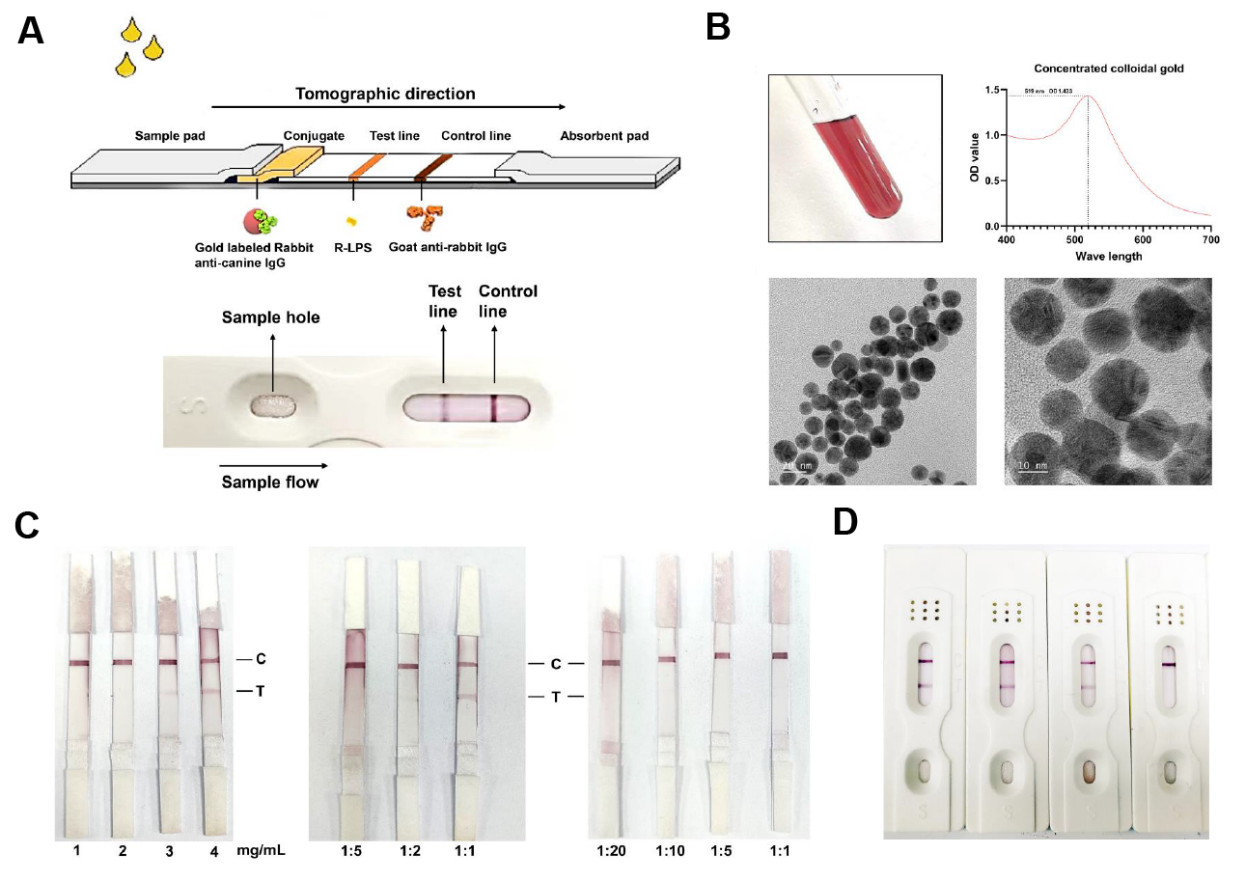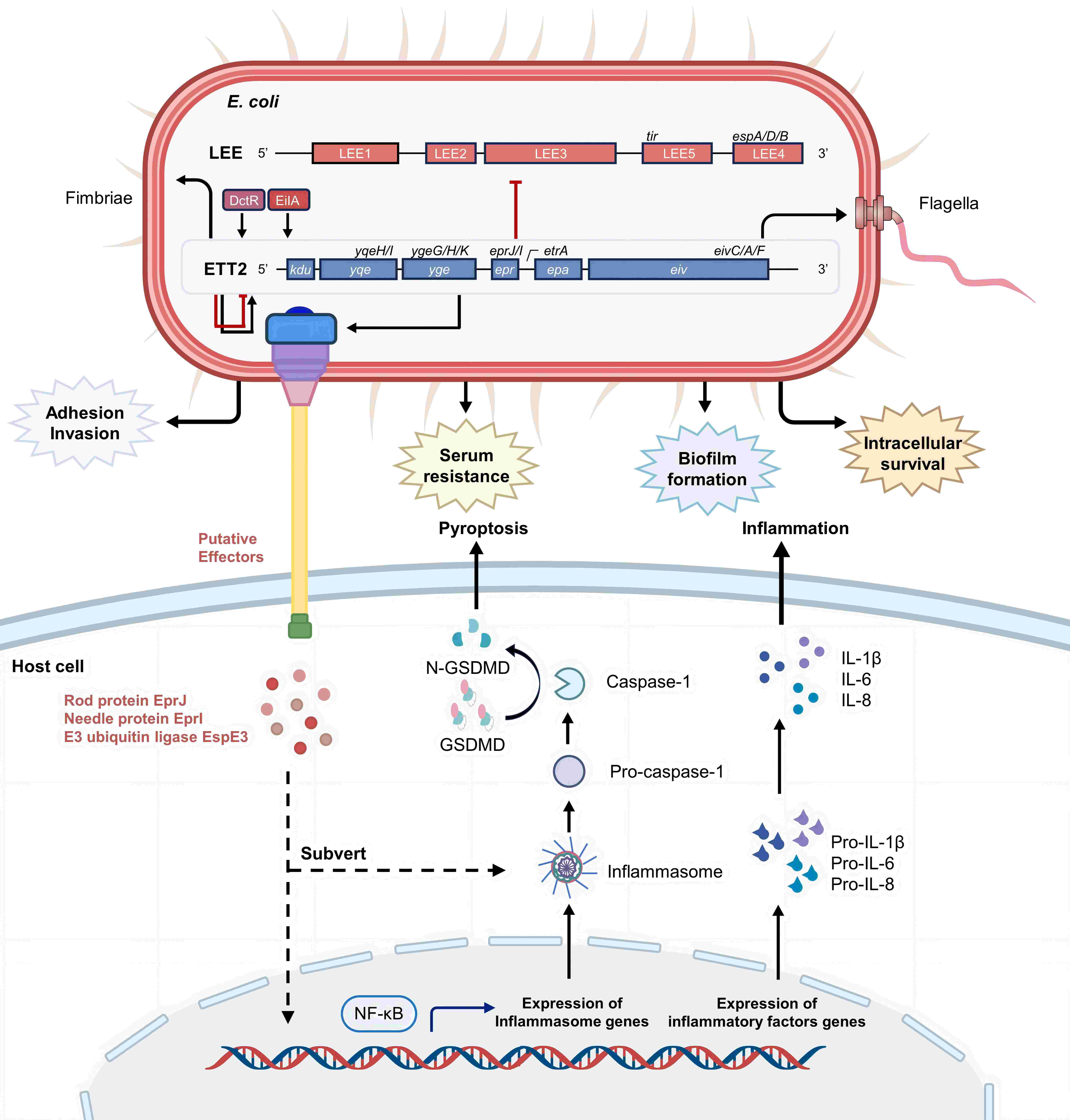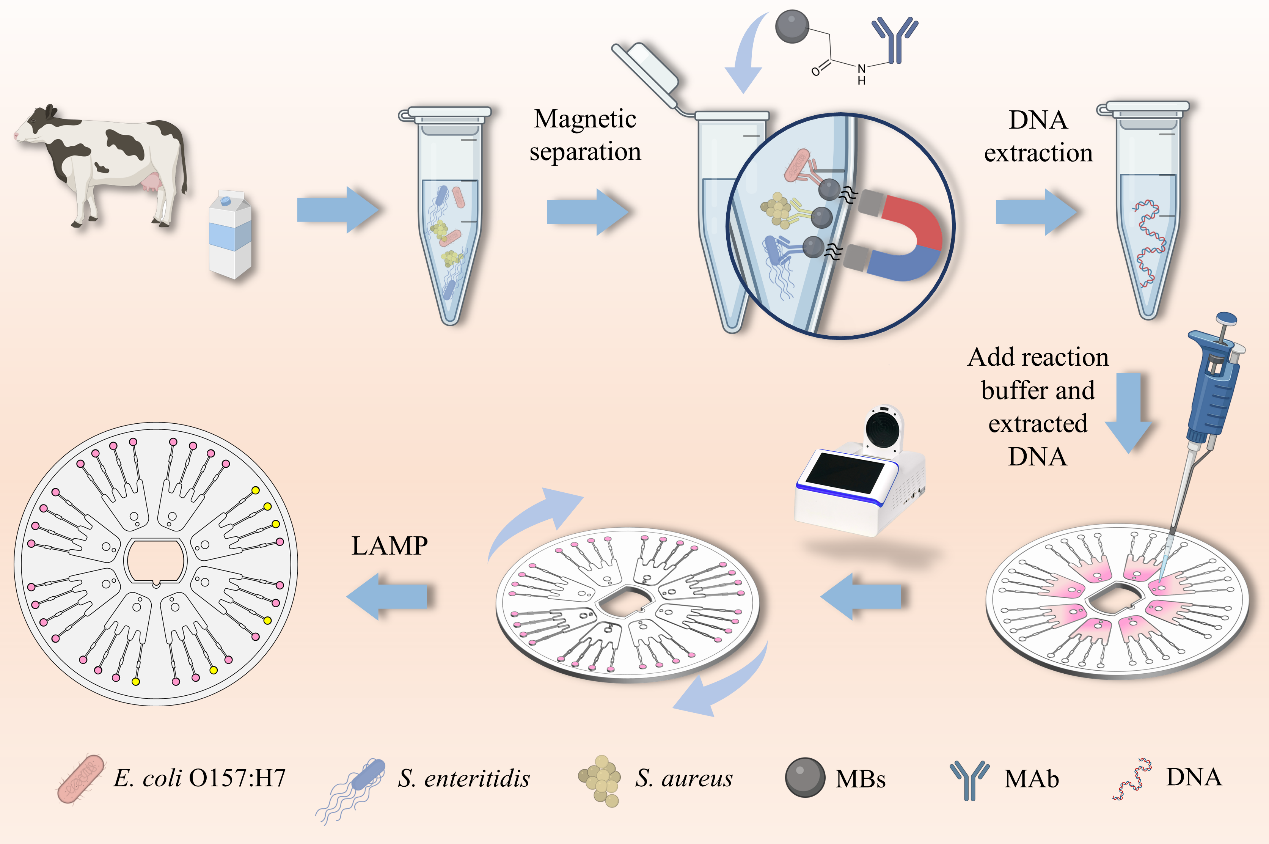
Recently, the group of Risk Early Warning and Prevention and Control of Bacterial Infectious Diseases in Livestock and Poultry of SHVRI, CAAS successfully developed a colloidal gold immunochromatographic test strip for the detection of Brucella canis infection in dogs. The results were published in Biosensors.
Background
Canine brucellosis is an important zoonotic bacterial infectious disease mainly caused by Brucella melitensis (S-type) and Brucella canis (R-type), which usually results in abortion or stillbirth in pregnant dogs, or orchitis and epididymitis in male dogs. It can also be transmitted from infected dogs to humans, causing undulant fever, infertility and arthritis. At present, the clinical serologic detection methods are mainly suitable for the diagnosis of S-type Brucella infections indogs, while R-type Brucella infections are easily missed due toinaccurate diagnosis, posing a serious threat to domestic dogs and public health safety.
Research progress
The immunochromatographic diagnostic strip developed in this study is specifically designed for the rapid diagnosis of R-type Brucella infection. The strip does not cross-react with positive serum from dogs infected with coronavirus, distemper virus and parvovirus, which are the most pandemic pathogens in clinical practice. Compared with commercial kits, the sensitivity and specificity of the strip are 95.23% and 98.76%, respectively, with a diagnostic agreement rate of 98.47%, indicating that it can be used as a reliable fast diagnostic method for R-type Brucella infection, especially in resource-limited areas.
Funding
This work was supported by funds from the National Key Research and Development Program of China, the National Natural Science Foundation of China, the Shanghai Science and Technology Innovation Action Plan, the Agricultural Science and Technology Innovation Program, and the Agricultural Science and Technology Innovation Program. Prof. Shaohui Wang and Prof. Mingxing Tian from SHVRI, CAAS are the co-corresponding authors of the paper, while Mr. Pengxiang Sun, a master candidate, is the first author.

Original link: https://pubmed.ncbi.nlm.nih.gov/39194617/




